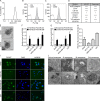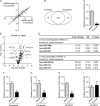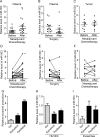Endothelial exosomes contribute to the antitumor response during breast cancer neoadjuvant chemotherapy via microRNA transfer
- PMID: 25860935
- PMCID: PMC4496353
- DOI: 10.18632/oncotarget.3520
Endothelial exosomes contribute to the antitumor response during breast cancer neoadjuvant chemotherapy via microRNA transfer
Abstract
The interaction between tumor cells and their microenvironment is an essential aspect of tumor development. Therefore, understanding how this microenvironment communicates with tumor cells is crucial for the development of new anti-cancer therapies. MicroRNAs (miRNAs) are small non-coding RNAs that inhibit gene expression. They are secreted into the extracellular medium in vesicles called exosomes, which allow communication between cells via the transfer of their cargo. Consequently, we hypothesized that circulating endothelial miRNAs could be transferred to tumor cells and modify their phenotype. Using exogenous miRNA, we demonstrated that endothelial cells can transfer miRNA to tumor cells via exosomes. Using miRNA profiling, we identified miR-503, which exhibited downregulated levels in exosomes released from endothelial cells cultured under tumoral conditions. The modulation of miR-503 in breast cancer cells altered their proliferative and invasive capacities. We then identified two targets of miR-503, CCND2 and CCND3. Moreover, we measured increased plasmatic miR-503 in breast cancer patients after neoadjuvant chemotherapy, which could be partly due to increased miRNA secretion by endothelial cells. Taken together, our data are the first to reveal the involvement of the endothelium in the modulation of tumor development via the secretion of circulating miR-503 in response to chemotherapy treatment.
Keywords: angiogenesis; cancer; exosomes; miR-503; microRNAs.
Figures






References
-
- Carmeliet P. Angiogenesis in life, disease and medicine. Nature. 2005;438:932–936. - PubMed
Publication types
MeSH terms
Substances
LinkOut - more resources
Full Text Sources
Other Literature Sources
Medical
Molecular Biology Databases

